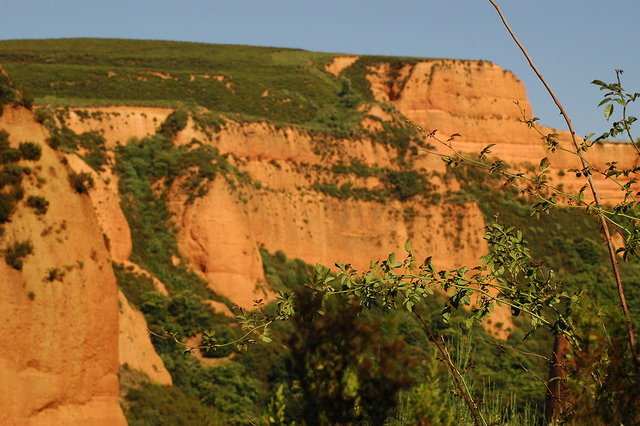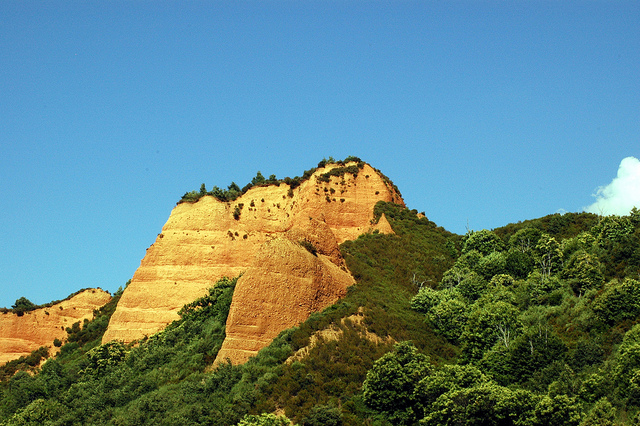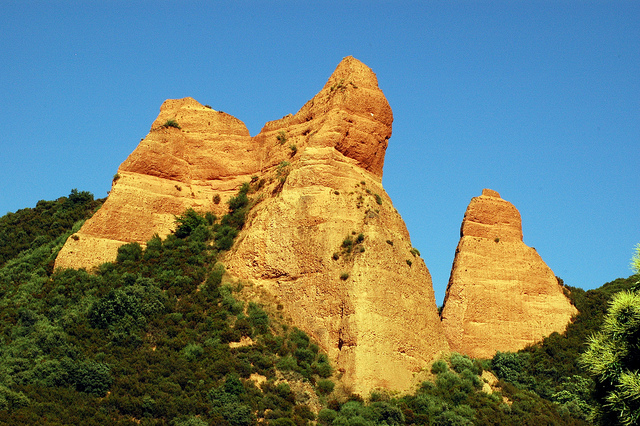Along with considering the whole pig as gastronomic fair-game, the Spanish and Chinese have historical similarities. One is in their approach to scenery, as demonstrated in Las Médulas where the locals washed an entire mountain range down the river in order to access a handful or two of gold.
Okay so maybe it was the Romans, not the Spanish... and maybe it was a few wheelbarrows of gold. Either way, around 77AD, over a 250 year span, a prize range of El Bierzo hills (near Leon) was manually reduced to a sandcastle.
At the time it must have been pure genius. They’d worked out how to get water across motorways, used pressure to flush bidets and in a moment of clarity figured that if you build a series of pipes through a mountain and sacrifice plenty of slaves in the process, you can get to the nuggets.
The scene is set. A network of tunnels primed and loads of serfs have popped their clogs. Now comes diverting the river and with the hills being porous and absorbing, they soak up the water like a sponge. Accelerated eons of erosion reduces them to sludge and washes everything down the valley. One can only imagine that guys in Stetsons and cowboy boots stood downstream with huge sieves to collect the results.
China would be proud.
It does make for a dramatic picture though and quintessentially UNESCO (another tick to the life ambition of visiting them all). The remaining hills emerge from the forest like the last of a clan of ancient golden sentries.
For the time-free there are a bunch of hiking trails through the site, weaving through quaint villages and beautiful landscapes... no doubt a few of those Camino de Santiago Shells are scattered through the area too. As an aside; was that guy not so good with the map or did he intend to zig-zag his way across the country?
Anyway. Las Médulas is best enjoyed at sunset, which fortunately in this part of the world takes about 4 hours. As seems to be customary in Spain we arrived around 8pm and left for supper at midnight.



